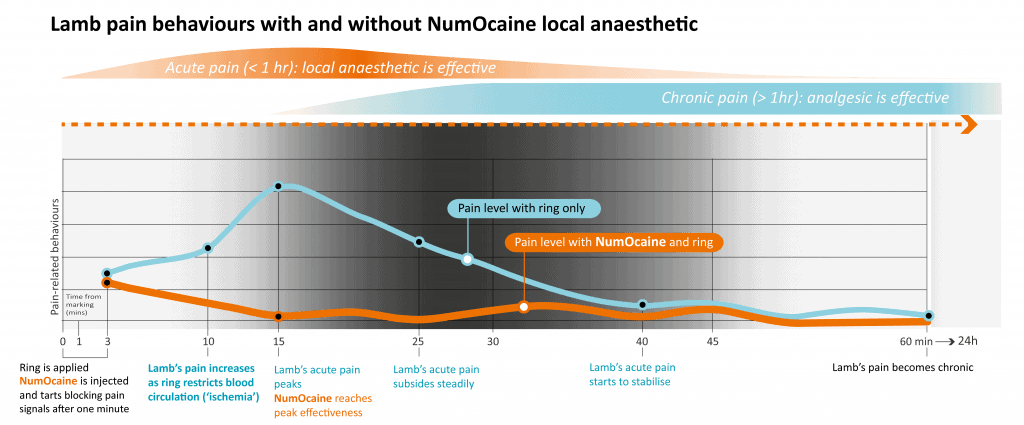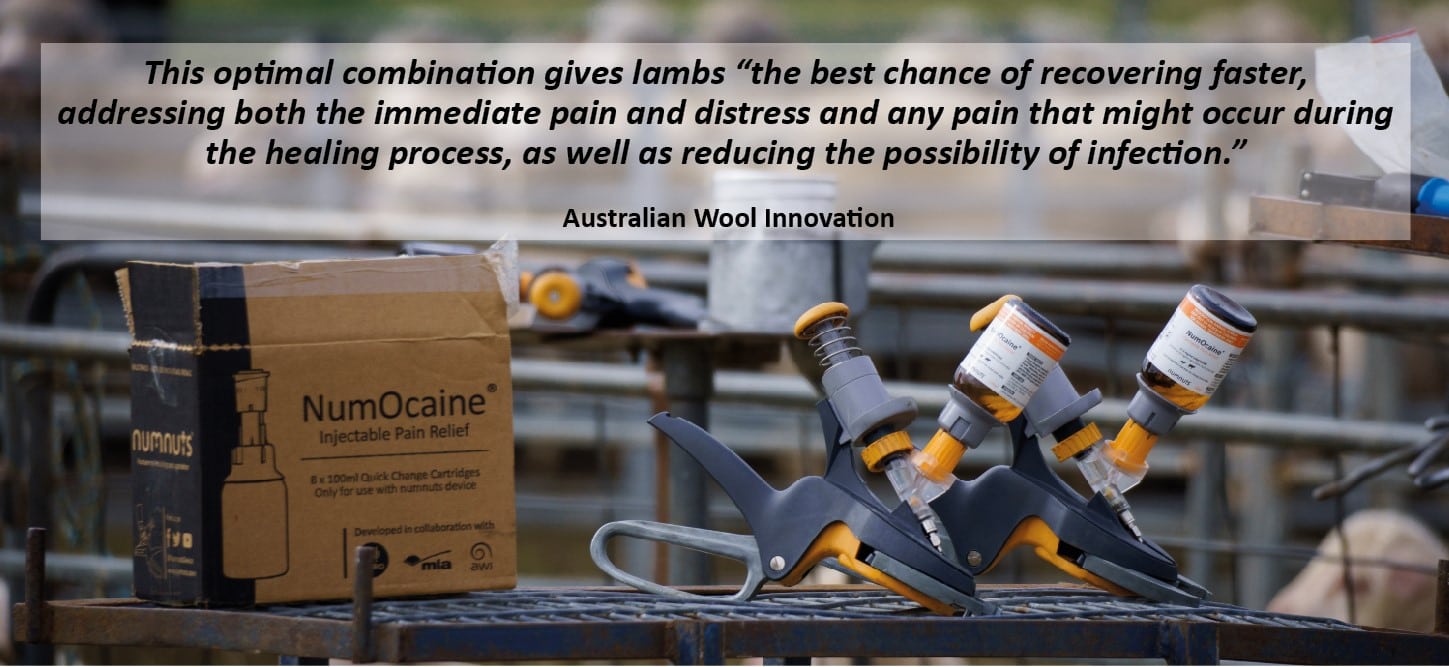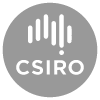Only a local anaesthetic can block intense pain experienced in the first 45 minutes
Numnuts has published a new factsheet explaining the science behind NumOcaine, the local anaesthetic used in the popular lamb ring-marking device.
Titled NumOcaine®: Primary Pain Medication for the Peak Pain Period, the factsheet cuts through some recent confusion about pain medications that has been visible in social media and also heard firsthand by the Numnuts team at industry events.
Manufacturer Senesino has taken this step to clarify the difference between injectable local anaesthetics and analgesics as an increasing number of pain medications reach the market.
The move coincides with the introduction of NumOcaine to rural stores, where farmers are now increasingly buying their supplies over the counter.

Only NumOcaine® provides relief where it’s most needed, when it’s most needed
The key message being communicated is simple.
NumOcaine uses a formulation of 2% lignocaine, the same medication that dentists use before extracting or drilling into a patient’s teeth.
In lambs, a 1.5 mL injection of this powerful local anaesthetic addresses the immediate acute pain that occurs in the first 45 minutes after ring marking.
This is when lambs are showing the highest level of pain-related behaviours, such as lying down with stiff legs, standing hunched, and repeatedly rolling.
CSIRO studies have shown that these behaviours peak at 15 minutes post-marking, when the rubber ring initially restricts blood circulation (‘ischemia’).

How NumOcaine acts to block the pain signals
A local anaesthetic such as NumOcaine (2% lignocaine) is very different to an analgesic, as we explained in an earlier article.
That’s because it blocks nerve transmission from the affected area to pain centres in the central nervous system.
This obstructs the movement of nerve impulses near the site of injection – ie. the tail or scrotum – without any changes in the lamb’s awareness or sensation in other parts of the body. In other words, it numbs the area.
Studies have shown that this effect in ring marked lambs reduces pain related behaviours by a significant 68%.
NumOcaine vs. NSAIDs
On the other hand, an analgesic (or Non-Steroidal Anti-Inflammatory Drug / NSAID) such as Metacam works by reducing inflammation at the site.
Unlike a local anaesthestic, an analgesic does not switch off nerve signals.
It first starts working around 15 minutes after ring application, taking effect only when the body’s inflammatory response to the tissue damage starts.
This happens about 60 minutes after the ring’s application. This is when the acute pain is diminishing, to be replaced by the chronic, inflammatory pain, which is lower than at the 15-minute peak.

The gold standard: local anaesthetic followed by analgesic
NumOcaine can, however, be administered in a combined approach with an analgesic, thereby meeting industry best practice guidelines for pain relief during lamb marking.
NumOcaine is effective for primary, acute pain in the first hour after ring application, backed up with an analgesic for the inflammatory pain that sets in after 60 minutes and lasts up to 24 hours.
Important notes:
- Topical medications containing lignocaine are suitable for open wounds, and not ring marking.
- Not even injected analgesics will block acute nerve pain, as they work on the inflammatory phase of the body’s response.



